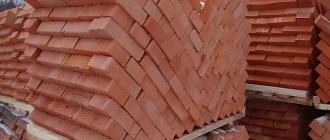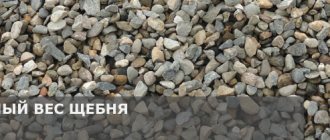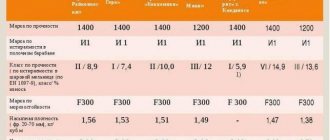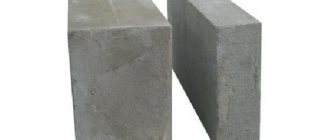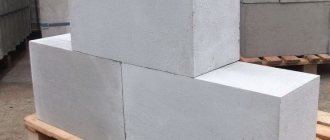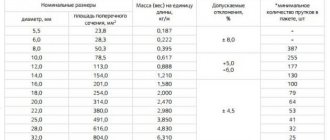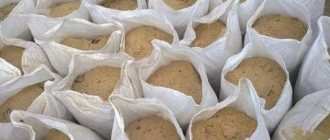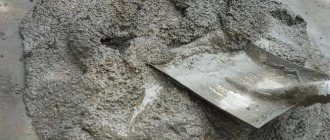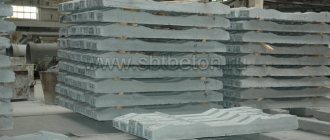The properties and weight of facing bricks are determined by the material from which it is made.
The main raw material is clay, which has been fired. It is the density of the clay and the dimensions of the product that determine the weight of the stone. Facing bricks have more precise dimensions than simple ones for masonry.
An important requirement is that its front surface must have an aesthetic appearance. The variety of applications forces manufacturers to produce a wide range of colors. Its two sides - the poke and the spoon - must have a smooth appearance.
There are several main types of bricks for cladding:
Ceramic. It can be solid or hollow. Voids are necessary for better heat retention.
They significantly lighten the weight of the stone. The surface can be varied - glazed, engobed. Combined options are in demand: one color, another texture.
Weight and dimensions of facing bricks: 250x120x65 (from 2 to 2.7 kg, depending on hollowness) 250x120x65 (3.65 kg, solid), 250x85x65 (Euro) (2.15 kg, hollow). Clinker facing brick. This is a modern, durable version of the simple brick. Good wear resistance allows it to be used in areas of intensive use - plinth, doorways, garden paths.
But it is denser, which means it is heavier and less thermally conductive. Weight and dimensions of facing bricks: 250x120x65 (4.2 kg, solid), 250x90x65 (2.25 kg, hollow), 250x60x65 (1.75 kg, hollow), 528x108x37 (3.75 kg, elongated brick). Hyper-pressed facing brick . It is produced using a non-firing method using impressive pressure.
Composition: limestone with cement, without sand and clay. The stone produces a beautiful “ragged chip”, which designers skillfully use. The brick is durable and frost-resistant.
250x120x65 (4.2 kg), 250x60x65 (2 kg), 250x90x65 (4 kg), 250x120x88 (6 kg). Sand-lime brick is leaving the facing brick market. It does not meet aesthetic standards and demands. Was in demand due to a shortage.
Standard brick sizes are in greatest demand. The standard size of a single facing brick is 250x120x65 (proportion 1:1/2:1/4.0) and one and a half - 250x120x88. The standard arose in 1927.
The double size is less used - 250x120x138. Other options are less common. The dimensions of facing bricks comply with GOST and SNiP (construction regulations). This allows you to work efficiently and reduces material consumption.
A legally manufactured and sold batch has accompanying documentation, which may indicate permissible errors. When ordering materials, you need to know their parameters. Even such a well-known material as brick has a large number of types and varieties. The good news is that its parameters are standardized. The standard brick size and its quality characteristics have been determined.
Types of building bricks
Based on the material, bricks can be ceramic (clay, red) or silicate (white). By purpose - ordinary (construction) and finishing (facade). Ordinary is used for laying walls and requires subsequent finishing, so a notch can be applied to the side edges (of the spoons) so that the plaster holds better.
Types of bricks - ordinary and special
Depending on the method of molding, bricks can be solid or hollow (hollow). A solid one is formed from a homogeneous composition. They are used where mechanical strength is important - foundations, load-bearing walls.
The size of the brick and its quality characteristics are determined by GOST 530-2007
Hollow has a certain percentage of voids, due to which the weight of the structure is reduced and thermal conductivity characteristics are improved. But the presence of voids significantly reduces sound insulation performance - the voids act as resonators. So you need to use them wisely.
Varieties
The popularity and huge demand for double brick is explained by its high performance. It may differ in texture, size, number of slots and void shapes. Depending on the raw materials used for manufacturing, there are two types of blocks.
Silicate
Their main feature is that they are produced from a mixture consisting of 90% sand and 10% water. In addition, the product also contains additives that increase its quality. This is an absolutely environmentally friendly material that looks similar to natural stone. The manufacturing process of double sand-lime brick occurs by pressing a moistened mixture of lime and sand, after which various pigments are added to it and sent for steam treatment. It can be either hollow, slotted, or porous. Based on strength, silicate blocks are divided into grades from 75 to 300.
These blocks are most often used for laying out internal and external partitions. Sand-lime bricks cannot be used for the construction of plinths and foundations of buildings, since the product is not resistant to moisture and, in the absence of a waterproofing layer, may be subject to destruction. It is not recommended to use double silicate bricks for laying pipes and stoves. It will not withstand prolonged exposure to high temperatures.
As for the advantages, this product has excellent sound insulation and has the correct geometric shape. Despite the heavy weight of such bricks, their laying is quick and easy. The density of silicate products is 1.5 times higher than ceramic products, so they provide durable and high-quality masonry. In addition, silicate double blocks are 30% cheaper than other types.
Ceramic
They are a modern building material that is used in almost all types of construction work. Its feature is its large dimensions, which are usually 250x120x138 mm. Thanks to such non-standard dimensions, construction is accelerated and the consumption of concrete pouring is significantly reduced. In addition, double ceramic brick is in no way inferior in strength to conventional blocks, so it can be used in the construction of load-bearing and self-supporting structures in buildings no more than 18 m high. The product is also characterized by high thermal insulation; buildings made from it are always warm, and they are constantly maintained optimal microclimate.
The main advantage of double ceramic bricks is their affordable price, while many manufacturers often offer good discounts when purchasing blocks for the construction of a large facility. These blocks, in addition to being of high quality, also have an aesthetic appearance. Typically, brick is red in color, but depending on the additives it can also take on other shades. The product is environmentally safe, and even with prolonged use and exposure to the external environment it does not emit harmful substances.
These blocks are transported on pallets, where up to 256 pieces are usually placed. As for the marking, it can be different; most often, everyone chooses M-150 and M-75 bricks for the construction of objects. In addition, double ceramic blocks are divided into solid and hollow; not only their price, but also their heat capacity depends on this parameter. Hollow brick cannot be used to build load-bearing walls; in this case, only solid brick is allowed. Despite the fact that the former is lightweight and significantly reduces the overall load on the foundation, the inherent gaps in it affect thermal conductivity.
In addition, double brick is divided into the following types.
- Private. These blocks are ideal for laying stoves, fireplaces and laying foundations. The only thing is that the front display requires additional finishing.
- Facial. It is produced in clinker and hyperpressed versions. It can be either solid or hollow brick. Unlike ordinary blocks, face blocks are produced in figured, trapezoidal, rounded and twisted forms. As for the color, it can be dark brown, gray, red, yellow and brown.
Ceramic brick size
Ceramic bricks are fired parallelepipeds formed from clay. Quality is largely determined by correctly maintained firing parameters, as well as the composition of the clay solution. High-quality ceramic bricks can be used for any construction operation: for laying a foundation (solid), constructing external walls and internal partitions.
Building bricks have certain dimensions determined by standards. The most commonly used single brick size is 250*120*65 mm
The main disadvantage of this building material is some variation in geometry. It is explained by the characteristics of the clay - it can have different “fat content”, which makes it difficult to accurately predict how much the dimensions will decrease during drying/firing.
What to look for when choosing
When choosing red brick, you should pay attention to its color.
It displays the quality of the batch with a parameter such as brick size. It can be under-burnt or over-burnt. The second option is not bad in operation (it looks darker than usual), but it is better not to use unburned brick (lighter and looser) at all - it falls apart very quickly.
Unburnt bricks quickly collapse
The second point that you need to pay attention to is the absence of foreign inclusions.
The most common are light dots and expanded clay. Both lead to rapid destruction of the brick. So we select only batches with uniform coloring without any additives.
More quality criteria
- For solid building bricks: Chips and bluntness of edges and corners are acceptable in an amount of no more than 2 pieces, no more than 1.5 cm long. There may be a curvature of the edges of no more than 3 mm. The presence of a crack along the width of the brick no more than 3 cm long is allowed on the spoon. For a hollow ordinary: No more than two chips at the corners with a depth of 1-1.5 cm, if they do not reach the voids. A crack across the entire thickness of the bed is allowed. Moreover, they can reach the first void. There may be one crack on the butt and tongue sides (on the side edges). The brick can be ordinary or finishing
That is, the requirements for ordinary building bricks are quite flexible. The presence of these defects does not affect the quality of the masonry, and the decorative component is unimportant, since the presence of finishing is assumed. Don’t forget to check the size of the brick - the spread in one batch should not be more than 3 mm.
The requirements for finishing (cladding) ceramic bricks are more stringent. Invalid:
- Chips of the edges more than 1.5 cm deep. There should be no cracks. There should be no chips on the edges more than 3 mm wide and more than 1.5 cm long.
To comply with these requirements, the finishing bricks are placed on pallets, the corners are protected with boards knocked down at an angle, and the entire structure is wrapped in film. It is transported in this form.
How many bricks are in a pallet - red facing, solid and stove bricks
It is clear that the total weight of the pallet depends on the weight of one red brick. But, as it turned out, the number of units that are stacked on a pallet also depends on the type of product. Let's try to summarize the information available on this topic, and then analyze it in more detail.
Table 2. Types of red brick
| Type of brick | Image | Number of units per pallet | Total pallet weight, kg |
| Regular full-bodied | 200-400 | 660-1440 | |
| Regular hollow | 352-444 | 810-1100 | |
| Hollow cladding | 480 | 634-662 | |
| Furnace heat resistant | 330-360 | 1386-1512 |
Facing building materials are packaged more carefully
So, having figured out how many pieces of red brick are in a pallet, you can calculate how many pallets will need to be purchased for a particular building. All this can help in calculations in order not to overpay for excess material. But there is one more parameter that you need to know. This is how much red brick is in 1 m3. The average data is as follows.
Table 3. Amount of red brick in 1 m3
| Brick size | Image | Quantity for laying (taking into account the solution) | Quantity on pallet (without solution) |
| Single | 394 | 512 | |
| One and a half | 302 | 378 | |
| Double | 200 | 242 |
Thus, knowing all this data, you can accurately calculate not only how much a pallet of red brick weighs, but also calculate the required amount for construction.
The number of units on a pallet depends on its strength
Important! Do not underestimate the ratio of weight and number of products in a pallet. After all, this is a direct indication of the quality of the products of a particular manufacturer. It should also be understood that, for example, the facing material is resistant to weather conditions only on the end sides. That is why its surplus, which has lain at least one winter in the open air, will be unsuitable for use. Such a product will begin to deteriorate very quickly, nullifying all efforts.
As for the cost of various types and brands, we will also provide a similar review now.
Dimensions
The optimal size of clay bricks (red, ceramic) was determined historically.
It has been produced for thousands of years, and as a result, the ideal combination of lengths has been developed, which is reflected in the standard. It was adopted only in the last century. There are three standard options:
- single - 250*120*65 mm (513 pieces per cubic meter); one and a half - 250*120*88 mm (379 pieces per cube); double (ceramic stone) - 250*120*138 mm (55 pieces per cube). Basic red ceramic brick sizes
One of the features is that a single brick can be solid or hollow. One-and-a-half and double - only hollow ones, otherwise they turn out to be too heavy for comfortable work.
In addition to the standard ones, there is a reduced brick. It is produced in Europe, but it also comes to us. Its parameters and international designation are summarized in a table.
MarkingBrick sizeConsumptionDF240*115*52 mm64 pcs/m2RF240*115*65 mm54 pcs/m2NF240*115*71 mm48 pcs/m2WDF210*100*65 mm59 pcs/m22DF240*115*113 mm32 pcs/m2
Characteristics
Ceramic brick obtained by firing clay using additives is distinguished by its high strength, level of frost resistance and moisture resistance. Ceramic products are environmentally friendly. A minor drawback is the cost and weight of this building material.
Slit stone has technological holes that can occupy up to 45% of the total volume. This structural type significantly reduces the weight of red hollow bricks as opposed to solid stones.
The main characteristic properties of ceramic products include:
- water absorption from 6 to 16%;
- strength grade M50–300;
- frost resistance index – F25–100.
Which size is better
In the post-Soviet space, single brick is most often used. It is very familiar to our eyes; many masonry schemes have been developed for it. Mastering bricklaying with your own hands is based on this material.
One-and-a-half bricks are used less frequently. It provides some economic benefit.
Firstly, a cubic meter costs a little lower. Secondly, since the masonry fragments are larger, less solution is consumed. Thirdly, the work goes faster.
Time is saved due to the larger size. But it’s more difficult to work with a one-and-a-half brick, even if it’s hollow – it’s hard to hold in your hand. And the appearance of the wall is unusual.
According to the standard, the edges of a brick are called bed, poke, spoon
Double brick is more often called ceramic building stone. When using it, the most noticeable effect is the speed of construction. In addition, the saving of the solution increases.
But you won’t be able to grab such a brick with one hand. Therefore, it is better to work with an assistant. The appearance of the masonry leaves much to be desired, so exterior finishing is desirable.
If we talk about other countries, the most popular ones in Europe are NF and DF. Imported NF ceramic bricks have almost the same proportions as domestic ones. DF category is thinner, the masonry looks elegant.
Dimensions of sand-lime brick
Sand-lime brick is made from quartz sand (9 parts) and lime (1 part), and a certain amount of additives. This building material has better thermal conductivity characteristics (conducts heat worse) and is lighter in weight. The technology is such that it is easier to maintain geometric dimensions, so there are usually no problems.
But it is not as hard as red brick, and it is also afraid of moisture - with prolonged contact with moisture it begins to crumble. Because of this, the main area of use is for the construction of walls and partitions. It cannot be used either for the foundation, or for the basement, or for laying a chimney.
Sand-lime brick can be colored. In this case, it is used as a finishing material.
The second area of application is as a finishing material. The base composition has a white, slightly grayish color. You can add any dye to it and get colored bricks.
The dimensions of building silicate bricks are the same as those of ceramic bricks: single has a height of 65 mm, one and a half – 88 mm, double – 138 mm.
The size of sand-lime brick is the same as standard ceramic
Single and one-and-a-half silicate bricks can be solid or hollow. A single solid one weighs 3.6 kg, a hollow one weighs 1.8-2.2 kg, depending on the size of the voids. A full-bodied one and a half has a mass of 4.9 kg, and a hollow one - 4.0-4.3 kg.
Double sand-lime bricks are usually made hollow. Its weight is 6.7 kg. Full-bodied ones are rare - due to their large mass (7.7 kg) they are difficult to work with.
Features of masonry, video
So, if white silicate brick was nevertheless chosen as the main material for construction, it’s time to understand the specifics of masonry made from such bricks.
There is no special technology in this case. Moreover, since the dimensions of standard red brick and the dimensions of white sand-lime brick are completely the same, you can use universal brickwork when the joints do not overlap each other. This is the main and, in fact, the only important condition. Aerated blocks, shell rock and some other materials are traditionally laid in a similar manner.
Let's look at classic masonry in a little more detail.
- The first row of bricks is laid in accordance with the markings. Then it is mandatory to lay the corners (“steps”) - this is necessary in order to maintain the geometric shape.
- To ensure the most even masonry from one corner to another, it is necessary to stretch a marking thread, which will serve as a guide for each next row of bricks.
- The second and subsequent rows are placed in a dressing. The joints should not coincide, and the degree of adhesion of the bricks to each other may differ depending on the fastening composition used.
- A prerequisite is to check each subsequent row of masonry for compliance with the horizon line and the marking thread.
- It is also necessary to control the jointing for each row. This is what ultimately guarantees the aesthetic appeal and overall neatness of the masonry. This is especially important, of course, when cladding and decorative masonry of facades.
As for the features of cladding as an independent process, here you can use such techniques as perpendicular laying of bricks (half a stone thick), protrusions-columns at the corners of the masonry, installation with an edge, etc. In addition, an increased size of white brick can be used for external cladding.
In some cases, it is rational to use reinforcing mesh or wire masked inside the seams. This gives increased strength to the entire structure. In addition to this, for high walls you can use anchors (after about 5 rows).
Weight of one piece: ceramic, silicate, ordinary, obverse
The weight of the brick is needed, firstly, to calculate the foundation; this parameter is especially important when determining the parameters of a strip-type foundation; secondly, for cargo transportation; and thirdly, to determine quality and compliance with GOST requirements.
Brick type Purpose Type Nominal dimensions Hollowness Weight Water absorption Ceramic GOST 530-2007 ordinary (working) single, solid 250 * 120 * 650% 3.3 – 3.6 kg 10 -12% single, hollow (hollow, slotted) 250 * 120 * 6530-32% 2.5 – 3 .0 kg (with 6% hollowness, weight 3.8 kg)12 -17%one-and-a-half, solid 250*120*880%4 – 4.3 kg12 -17%one-and-a-half, hollow250*120*8830-32%3.5 kg ( with a hollowness of 6% - 4.7 kg)12 -17% double, solid 250 * 120 * 1400% 6.6 - 7.24 kg 12 - 17% double, hollow 250 * 120 * 14030-32% 5.0 - 6.0 kg12- 17% facing (front) single, solid 250 * 120 * 650% 2.6 kg9 – 14% single hollow 250 * 120 * 6530-36% 1.32 – 1.6 kg 9 -1 4% one-and-a-half hollow 250 * 120 * 8830 -36% 2.7 – 3.5 kg 9 – 14% Silicate GOST 379-95 row (working) single solid 250 * 120 * 650% 3.7 – 3.8 kg (according to GOST) single hollow 250 * 120 * 6515-31% 3.1 – 3.3 kg one and a half solid 250*120*880% 4.2 – 5.0 kg one and a half hollow 250*120*8815-31% 4.2 – 5 kg double hollow 250*120*14015-31% 5.3 – 5, 4 kg facing (facial) single solid 250*120*650%3.5 – 3.9 kg one and a half solid 250*120*880% 3.7 – 4.3 kg one and a half hollow 250*120*8815-31%3.7 – 4.2 kg
In addition to standard size bricks, there are a large number of lightweight finishing bricks. For example, there is a silicate one and a half, which weighs only a little more than a standard single - 4.1-5.0 kg.
The weight of a standard brick is determined by GOST
There is the so-called “American” - with a standard single size and a weight of only 2.5 kg. Lightweight versions can be used for finishing facades in case of insufficient bearing capacity of the foundation. Although, it is better to use a lighter finish - facade slabs, for example.
How much does ceramic brick weigh? Properties and mass of blocks
The weight of ceramic bricks is an important component in determining the possible loads on the foundation. Knowing the mass is also necessary when performing facing work in order to understand whether load-bearing walls can handle it. It is made from several types of clay or a mixture of them. The material is necessarily fired in ovens, which achieves its highest strength and excellent technical characteristics.
Production technology divides it into two categories:
- Silicate.
- Ceramic.
- Porized.
- Hollow.
- Full-bodied.
- Facing.
Technical specifications
Ceramic brick is in demand due to its excellent characteristics:
- High level of thermal insulation. The impact of outside noise can be significantly reduced.
- Copes with the negative effects of the environment: frost, ultraviolet rays, moisture, etc. Able to survive many freeze/thaw cycles.
- High strength.
- It weighs relatively little.
- Environmentally friendly.
An important advantage over other analogues is its affordable price.
The weight characteristics of facing bricks deserve special attention; the average weight is about 4 kg. Based on its type, the presence or absence of voids, this indicator may vary.
- The weight of a solid brick 250×120×65 mm is 2.5 kg.
- Hollow 250×120×88 – around 3.6.
There are other sizes on sale, for example, 250x120x103 mm. You can also find out the weight in the pallet. There are cases when it holds 300-500 pieces, and the stand itself is 23 kg. The mass of one product is multiplied by the total quantity.
During construction, you need to know the specific and volumetric mass. A standard ceramic block weighs 3.5 kg with dimensions 250×120×65 mm, and with voids - 2.3 kg, sp. the weight will be 2600 kg/m3, volume – 1800. The last parameter is important when choosing the most durable product. The specific indicator includes only the material itself, excluding voids, for example, a block having 3/4 sp. weight, has 1/4 less strength.
Table with standard sizes:
| Solid brick | |||
| View | Weight, kg | On pallet, kg | Quantity per cube |
| Double | 6,6–7,2 | 1320–1440 | 1600–1740 |
| One and a half | 4–4,3 | 800–860 | 1510–1615 |
| Single | 3,3–3,6 | 655–1435 | 1695–1850 |
Hollow block data:
| View | Weight, kg | On pallet, kg | Quantity per cube |
| Double | 4,6–5 | 810–1115 | 970–1200 |
| One and a half | 3–3,3 | 860–1150 | 1140–1250 |
| Single | 2,3–2,5 | 810–1105 | 1180–1280 |
The weight of the red double element 250x120x138 mm M150 is 5.4–5.8 kg. Another similar hollow standard size 250×120×140 mm has a mass of 4.5–5 kg. Full-bodied is in the range from 3.3 to 3.6 kg with dimensions of 250 × 120 × 88 mm.
You can find out what load is expected on the foundation and load-bearing walls. It may be decided to strengthen the base or use a different surface covering technology that has less mass.
Understanding these characteristics will help you choose the right vehicle for transportation. Often sales are carried out in cubic meters, knowledge of this information will allow you to determine which truck will be able to transport a given volume of material in advance.
Weight directly depends on the following indicators:
- Size.
- Occupancy.
- Functional.
An ordinary single brick with a minimum number of voids weighs around 2.5 kg, and a solid one - from 3 to 3.6 kg. One and a half is larger than the previous one, so the mass increases:
- Full-bodied - about 5 kg.
- Hollow - approximately 3.5 kg.
Tips before purchasing
It is important to pay attention to visual examination; it is also worth carefully checking the accompanying documentation. Upon inspection, the following is determined:
- What is the sound when struck? High-quality ceramics have a ringing tone, while unfired ceramics are dull.
- The presence of irregularities, cracks and chips is a signal of a bad product; you should not purchase it. Material with a spall depth greater than 6 mm is unsuitable for masonry.
- The presence of lime inclusions will cause damage to the brick over time. Lime is a hotbed for moisture absorption, which can lead to enlargement and destruction.
- The specimen is best viewed in daylight rather than indoors.
- When cladding the facade, you should buy a block from the same batch, otherwise there may be differences in color.
Fireclay brick parameters
For the construction of stoves and fireplaces in the area of contact with fire, special fire-resistant bricks are used. In its production, a special type of clay is used - fireclay.
That’s why such a brick is also called fireclay. The production process is the same as for building red bricks - molding, drying, firing in a kiln. But, due to the special properties of fireclay, the resulting building material can easily withstand prolonged contact with open fire.
There are two brands of general-purpose refractory bricks used in everyday life: ShA and ShB. ShA can withstand temperatures up to 1690°C, ShB - up to 1650°C, all other parameters are identical. Therefore, their scope of application is the same - this is the molding of fireboxes for fireplaces and stoves.
Some types of fire bricks: sizes may vary, but they are all standardized
Encode the size of the refractory brick in the number that appears after the abbreviation:
- ShB-5, ShA 5 - 230*114*65 mm; ShB-6, ShA 6, ShA 14 - 230*114*40 mm (flying arm); ShB-8, ShA 8 - 250*125*65 mm; ShB- 9, ША 9 - 300*150-65 mm;
Most often they use ShA 8 or ShB 8. They are the same in length and thickness as the ceramic red brick from which the rest of the stove is made. There is also a wedge-shaped refractory brick - for forming firebox arches and smooth curves in the horizontal plane.
There are two types of wedge refractory bricks:
- end - for forming curves in the horizontal plane ША, ШБ 22 - 230*114* 65/55 mm; ША, ШБ 23 - 230*114*65/45 mm; ША, ШБ 48 - 250*124*65/45 mm; Types of wedge fireclay bricks: rib and end wedge-rib for forming arches ША, ШБ 44 - 230*114*65/55 mm; ША, ШБ 45 - 230*114*65 /45 mm; ША, ШБ 49 - 230*114*96/65 mm; ША, ШБ 50 - 230*114*76/65 mm; ША, ШБ 51 - 230*114*56/65 mm; ША, ШБ 52 — 345*150*125/75 mm; ША, ШБ 53 — 345*150*90/75 mm; ША, ШБ 54 — 345*150*80/75 mm;
These are not all the sizes and types of fireclay bricks. You will find more in GOST 8691-73.
Clinker brick
Clinker brick is another special type of ceramic brick.
In its manufacture, a special type of clay is used - refractory shale. The molded blocks are fired at a very high temperature - 1200°C. As a result of this processing, the clay acquires the properties of ceramics, the color ranging from dark red to rich brown.
Clinker brick has very high strength and abrasion resistance. You can use it to pave roads or decorate porches. And they will serve for centuries.
The surface of the clinker is flat, smooth, shiny. This allows it to be used also as a finishing brick - for finishing facades, laying pillars, etc.
Types and sizes of clinker bricks of one of the class=”aligncenter” width=”951″ height=”571″[/img]
The shape and size of clinker bricks can be very different - there are a lot of them, since there are not only standard ones - in the form of a parallelepiped, but also with beveled at different angles, rounded edges.
Natural stone has served as one of the main materials for construction since ancient times. However, everything changed with the advent of modern building material - brick.
The person was able to independently give the finished product the desired characteristics. Every day you can see the use of this building material in a variety of variations. Today it is not a problem to purchase a standard brick yourself: you can find out the sizes and selection criteria in this article.
Brick is most often used in building houses and laying foundations.
The main areas of use of bricks:
- erection of walls (including load-bearing); laying the foundation; construction of basements; arrangement of basements; cladding of facades; construction of stairs; construction of brick partitions in houses; laying fireplaces and stoves.
Brick finishing looks great not only outside, but also inside the house
The most common use is the usual red brick.
Its technical characteristics are excellent for performing a wide variety of jobs. Including the construction of elevator shafts, columns, building vaults. Often, ordinary red brick is used to lay the foundation of low-rise buildings.
If we talk about the construction of stairs, then in this case it is better to use a ceramic product. It is more resistant to moisture, temperature changes and other environmental influences. In addition, ceramics are relatively easy to mechanically impact, which makes it possible to cut bricks if necessary.
Ceramic brick is widely used for laying stairs and steps
There are single, double and one-and-a-half bricks; we will consider the sizes of each type below.
In the process of development of the construction craft, certain standards have been developed that the material must meet. Single brick size: 120mm wide, 250mm long and 65mm high. It is this size of bricks that is considered ideal for masonry with alternating longitudinal and transverse placement.
Related article:
The size of sand-lime brick, its features and installation.
Scope of application. Advantages and disadvantages of the material. Types and features of installation. General tips for working with sand-lime bricks.
Over time and the development of construction, more and more diverse materials were required. This is how new, non-standard one-and-a-half-size bricks appeared. Their parameters are: 120 mm wide, 250 mm long and 88 mm high.
The use of such bricks requires knowledge of a special masonry technique designed to lighten the final weight of the building. So, it is necessary to alternate solid bricks with porous, perforated or hollow ones.
Double brick has impressive dimensions, as a result of which it is never made solid. The brick size is 120 mm wide, 250 mm long and 103 mm high. They are used only for lightweight masonry.
Standard sizes of different types of bricks
Red brick is a universal material that is produced by firing pressed clay briquettes. Most often used for the construction of foundations, walls, and partitions. It is also used for laying stoves and fences.
Avoid purchasing burnt bricks. They can be seen with the naked eye by their black, scorched center and scorched edges. This material cannot be used for most construction work, but it is suitable for laying foundations.
Options for laying standard size bricks
The weight of a solid brick is from 3.5 to 3.8 kg.
One cubic meter of red brick weighs about 1,700 kg and holds approximately 480 pieces. On the packaging, the manufacturer must indicate the pressure that this particular material can withstand in compression in kg/cm², for example, 76, 100, 125, 200, etc.
Useful advice! A high-quality fired brick will produce a clear, ringing sound when struck.
Examples of calculations
Recently, many land owners prefer to build houses and outbuildings themselves. Of course, this process is considered complex and requires certain knowledge, but if you draw up the project correctly and calculate the brick consumption, you will ultimately be able to build a beautiful and durable building. The following examples will help beginning craftsmen in calculating building materials.
Consumption of red solid bricks for the construction of a two-story house 10x10 m. First of all, you need to know the entire length of the external floors. Since the building will have 4 walls, the total length will be 40 m. With a ceiling height of 3.1 m, the area of the external walls of two floors will be 248 m2 (s = 40 × 6.2). From the resulting indicator, you will have to subtract individual areas located at a distance for door and window openings, since they will not be lined with bricks. Thus, it turns out that the area of the walls of the future house will be 210 m2 (248m2-38m2).
For the construction of multi-story buildings, it is recommended to make walls at least 68 cm thick, so the masonry will be done in 2.5 rows. First, the masonry is carried out with ordinary single bricks in two rows, then the cladding is made with facing bricks in one row. The calculation of blocks in this case looks like this: 21×210=10710 units. In this case, the following single row bricks for floors will be needed: 204×210 = 42840 pcs. The weight of the building material is calculated by multiplying the mass of one block by the total quantity
In this case, it is important to take into account the brand of brick and its features
The consumption of solid red brick for laying a wall is 5x3 m. In this case, the surface area that needs to be laid will be 15 m2. Since for the construction of 1 m2 you need to use 51 pcs. blocks, then this number is multiplied by the area of 15 m2. As a result, it turns out that 765 bricks will be required to build a 5x3 m floor. Since during construction it is necessary to take into account mortar joints, the resulting figure will increase by approximately 10%, and the consumption of blocks will be 842 pieces.
Since one pallet can accommodate up to 275 units of red solid brick, and its weight is 1200 kg, you can easily calculate the required number of pallets and their cost. In this case, to build a wall you will need to purchase at least 3 pallets.
For an overview of the characteristics of red solid Votkinsk brick M 100, see below.
White brick: sizes and applications
White or sand-lime brick is made on the basis of silicate, which is why it got its name.
Durable and lightweight material, which is mainly used for the construction of walls and partitions. Such bricks are never used for laying foundations, stoves, pipes, fireplaces or plinths. Standard size of white brick: 250x120x88 mm.
White sand-lime brick is used to construct buildings for various purposes
Useful advice! Knowing the modular size of the brick, you can design the future structure and calculate the required amount of material.
A material familiar to all of us, which, in turn, is divided into construction and facing.
Kiln brick is a separate type. The size and convenient shape allow you to make even, smooth masonry without excess seams. The standard size of stove bricks is 250x125x65 mm.
Since this material is used for masonry in very critical places, it is unacceptable to use bricks even with slight defects. It is not difficult to check the quality of bricks - when tapped, refractory bricks should make a metallic sound. When split, it should crumble into large pieces.
Poor quality, unburnt material will accumulate moisture, which can lead to structural failure. Kiln brick is more expensive than usual, but it is fireproof and retains heat well. The size of fire bricks is always the same.
Refractory brick is ideal for laying fireplaces and stoves
Useful advice! Instead of stove bricks, it is quite acceptable to use fireclay bricks. The dimensions and characteristics of this material fully meet all the requirements.
Decorative brick is used for laying walls, while providing a flat, smooth surface. Its correct shape allows the product to be used as a final decoration for walls both inside and outside the house. At the same time, the glossy surface of the outer walls of the brick gives the surface a special chic.
It is for these qualities that decorative bricks are often called “facing” or “facade”. There are no difficulties in working with this type of material, except for the need to pay special attention to cutting the seams. The size of the facing brick can be different depending on the type: single, one-and-a-half or double.
Decorating the facade with facing bricks gives the building a special elegance
The size standard for facing bricks is no different from its conventional counterpart. Exceptions include handmade items. Non-standard dimensions of a single facing brick can be 210x100x50 mm, 240x115x52 mm or 210x100x65 mm.
These sizes of single facing bricks are not produced in factories, and they cost an order of magnitude higher. They are always produced in limited editions. They are used for the restoration of old buildings or the implementation of original construction ideas.
The size of one-and-a-half handmade facing bricks can also be very different, for example, 240x115x71 mm. Using bricks of this size looks extremely advantageous.
An example of restoration of old masonry using facing bricks
Double facing bricks of non-standard sizes are available in the format 240x115x113 or 190x90x90 mm.
It’s up to you to decide whether to use standard size facing bricks to decorate your house, or purchase more expensive handmade materials. However, before purchasing, it is better to consult with a specialist who can explain all the nuances of working with a specific type of brick.
Pros and cons of the material
Taking into account the parameters discussed in detail above, it is possible to determine the advantages and disadvantages of sand-lime brick as a material for full-fledged multi-tasking construction,
The main advantages of sand-lime brick:
- Possibility with the same guarantees of strength to be used for both internal and external construction, as well as for finishing.
- Impressive performance in terms of strength, durability, and density.
- Significant ability for noise reduction and thermal insulation, which is very important in the construction of buildings for any purpose.
- Environmental cleanliness (if we are not talking about special compounds outside GOST and distorted sizes of white bricks).
- Potential immunity of the material to mold, since the lime contained in the brick has antiseptic properties.
- Serious indicators in terms of frost resistance.
- Possibility of using various solutions during laying while maintaining good adhesion to the material. In particular, polymer adhesive is quite acceptable, and not just traditional cement-sand options.
- Classic rectangular shape, predictable size of sand-lime brick, when the length of the standard brick is always the same, as well as the width.
By the way, since the width of the brick is standard in all cases, you can easily calculate the required thickness of the masonry by varying the height of the structure by using standard, one-and-a-half or double silicate brick sizes.
Despite the large number of advantages, the material in question also has obvious disadvantages. The main disadvantages of sand-lime brick:
- The same geometric clarity can appear in a negative way if what is needed is not straight lines, but smoothness and fluidity of lines. For such cases, white bricks are not suitable.
- Inflated values of water absorption, affecting thermal insulation, strength and other characteristics, reducing them.
- Due to point 1, sand-lime brick cannot be used for swimming pools, basements, baths and saunas, as well as any other types of premises where high humidity is expected.
- For the same reason, the use of sand-lime brick requires particularly careful waterproofing and drainage work.
- The use of the material at elevated temperatures is unacceptable due to its poor heat resistance.
- Finally, sand-lime brick is considered a fairly heavy material, under which there must be a strong and reliable foundation. It is not always possible to use this brick on balconies, roofs, etc.
How to choose a standard brick. Dimensions and specifications
Before buying a brick, you need to clearly understand the purpose of its purchase. It is this that will determine the necessary properties of the material.
The color of a brick depends on the clay from which it is made. The most common option is red-burning clay mass.
It gives the finished product the familiar red color. Less commonly, you can find clay bricks of white, apricot or yellowish color, for the manufacture of which white-burning clay is used. It happens that to obtain the desired color or shade, a special pigment is added to the source material.
An example of the use of bricks of various shades in interior design
Ordinary brick is excellent for erecting walls and constructing structures of any complexity. Standard dimensions of ordinary bricks: 250x120x56 mm.
In the future, it requires additional finishing, for example, plastering. The facing material has such even and smooth surfaces that it does not require additional finishing. However, the prices and sizes of facing bricks are much more varied.
Useful advice! Bricks may have a relief pattern on the surface, designed for better adhesion to the plaster mortar.
An important criterion for choosing a brick is strength, that is, the ability of the material not to collapse under the influence of external loads.
To build a low-rise building, it is enough for the brick to withstand a load of 100 kg per 1 cm. If we are talking about building a multi-story building, then the indicator should be at least 150. The strength of each specific batch is always indicated by the manufacturer on the packaging.
To build multi-story buildings, it is necessary to choose bricks with very high strength values.
Another important indicator of brick quality is frost resistance. This value is measured in cycles and determined through testing for each brand of brick separately.
The finished product is first placed in water and then in the freezer. The duration of stay in each environment is 8 hours. This is one cycle, which is repeated until the material begins to clearly change its characteristics.
Multi-storey buildings and industrial buildings, according to standards, are built from bricks with frost resistance of at least 35 cycles. However, there are products on the market with very different performance indicators.
You can easily find 25 and 15 cycles. The cost of material with a low index will be significantly lower, but won’t you regret it over time? If you are not sure which option to choose, it is better to contact a specialist who will help you choose the brick that is suitable for your climate and type of building.
Composition and production features
What is sand-lime brick made from? The composition is quite simple. The raw materials used are lime, quartz sand and water.
It is allowed to introduce plasticizing additives into the initial composition, which increase the performance characteristics of the finished product. GOST requirements , so the composition of sand-lime brick remains unchanged regardless of the manufacturer.
If we talk about production technology, the following steps are followed:
- The starting components are dosed in a given proportion and mixed thoroughly until a homogeneous mass is obtained.
- Then the composition is sent to molding, where it is poured into molds and pressed.
- Temperature treatment is carried out in autoclaves. For these purposes, steam is usually used at a temperature slightly higher than boiling water.
- Finished products undergo quality , are packaged and sent to places of sale.
The production technology is quite simple, however, it requires the use of special equipment. That is why sand-lime brick is produced only on an industrial scale: the production of small batches turns out to be unprofitable.
Appearance of bricks
Today there are two options for brick sizes: standard and non-standard.
As previously mentioned, the standard length is 250 mm, width is 120 mm, and height is 65 mm. Such parameters are associated not only with the fact that such a brick is extremely convenient to use and fits well in the hand. The fact is that during the construction process the bricks are positioned perpendicular to each other, alternating longitudinal and transverse sides.
Standard brick laying scheme
Take a closer look at the numbers and you will notice that the standard indicators are almost multiples of each other. And this facilitates any calculations, work with such material and minimizes the need for sawing bricks.
You can often find bricks of non-standard sizes. They have the same length and width as standard ones, and differ only in the height of the stone.
For example, the thickness of a one-and-a-half product is 88 mm, and a double product is 138 mm. Such materials are mainly used for decorative purposes. They are good for decorating houses, roofs and facades.
Stylization of the facade “antique” in combination with a modern interior style
For example, a good choice of color and size of facing bricks: yellow one-and-a-half or double brown.
Brick weight
Another characteristic of a brick is its weight. This indicator is completely different for different types of products.
Thus, the weight of standard ceramic or sand-lime brick is 3.8-4 kg. Moreover, if the brick has cavities inside, then it will weigh less. Therefore, during design, the weight of each brick is not taken into account, but only the specific masonry, that is, the weight of 1 cubic meter of building material plus the weight of the required amount of cement mortar.
When designing a building, it is necessary to take into account such a parameter as the total specific gravity of the masonry
The specific gravity of masonry can vary from 600 kg/m³ to 1800 kg/m³ and directly depends on the weight of each brick. By calculating the weight of the future building at the design stage, you can make adjustments to laying the foundation, thus making the structure stronger and more reliable.
Where is it used? Area of use of silicate
Due to its high strength and frost resistance, this building material is used in almost any construction. In particular:
- Residential buildings: private houses and high-rise buildings.
- Warehouse and utility rooms.
- Garages.
Sand-lime brick has proven itself well in regions with cold winters. However, there are some operating restrictions. White brick is well saturated with moisture, so it is not recommended for foundations and basements.
